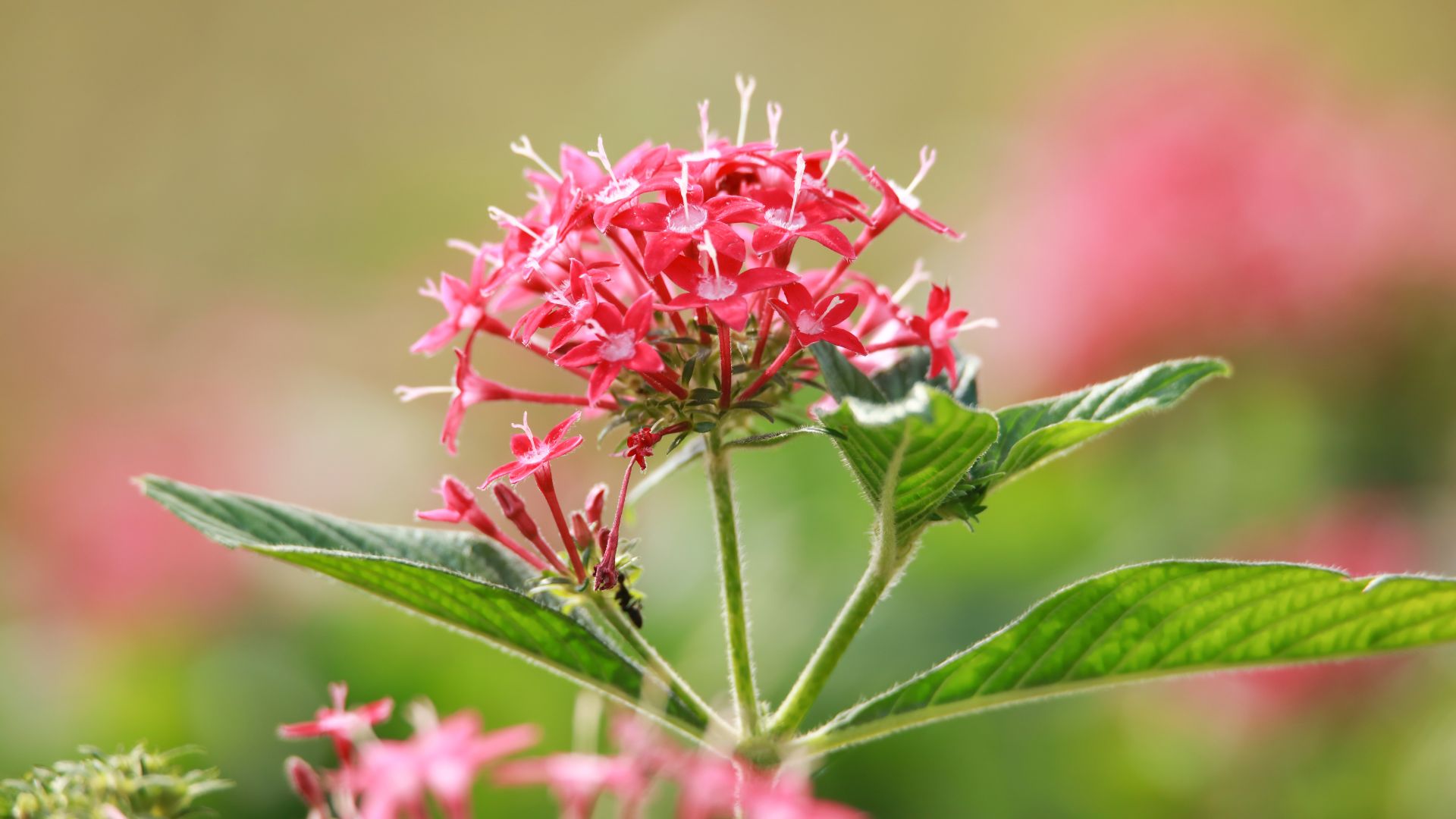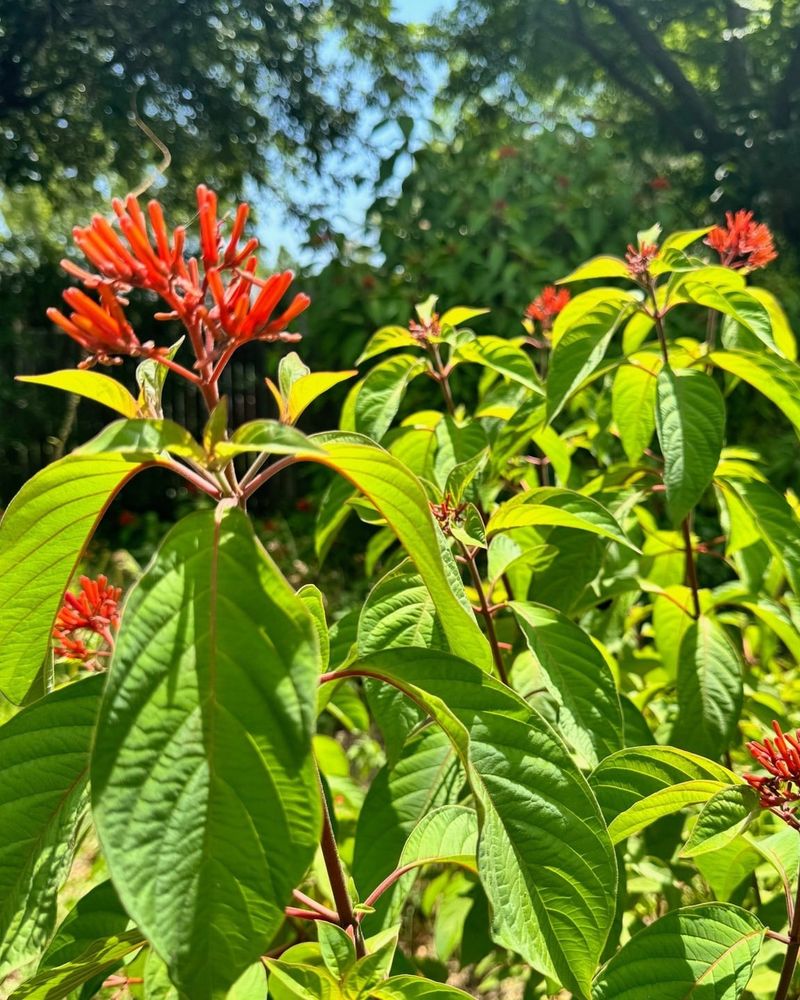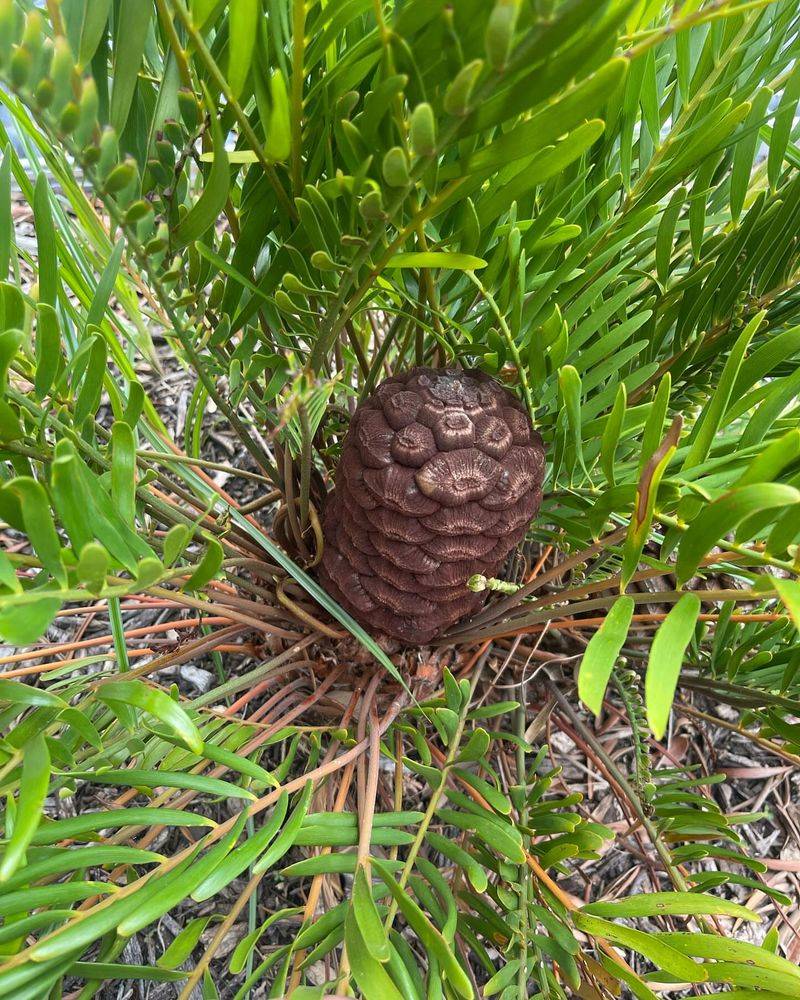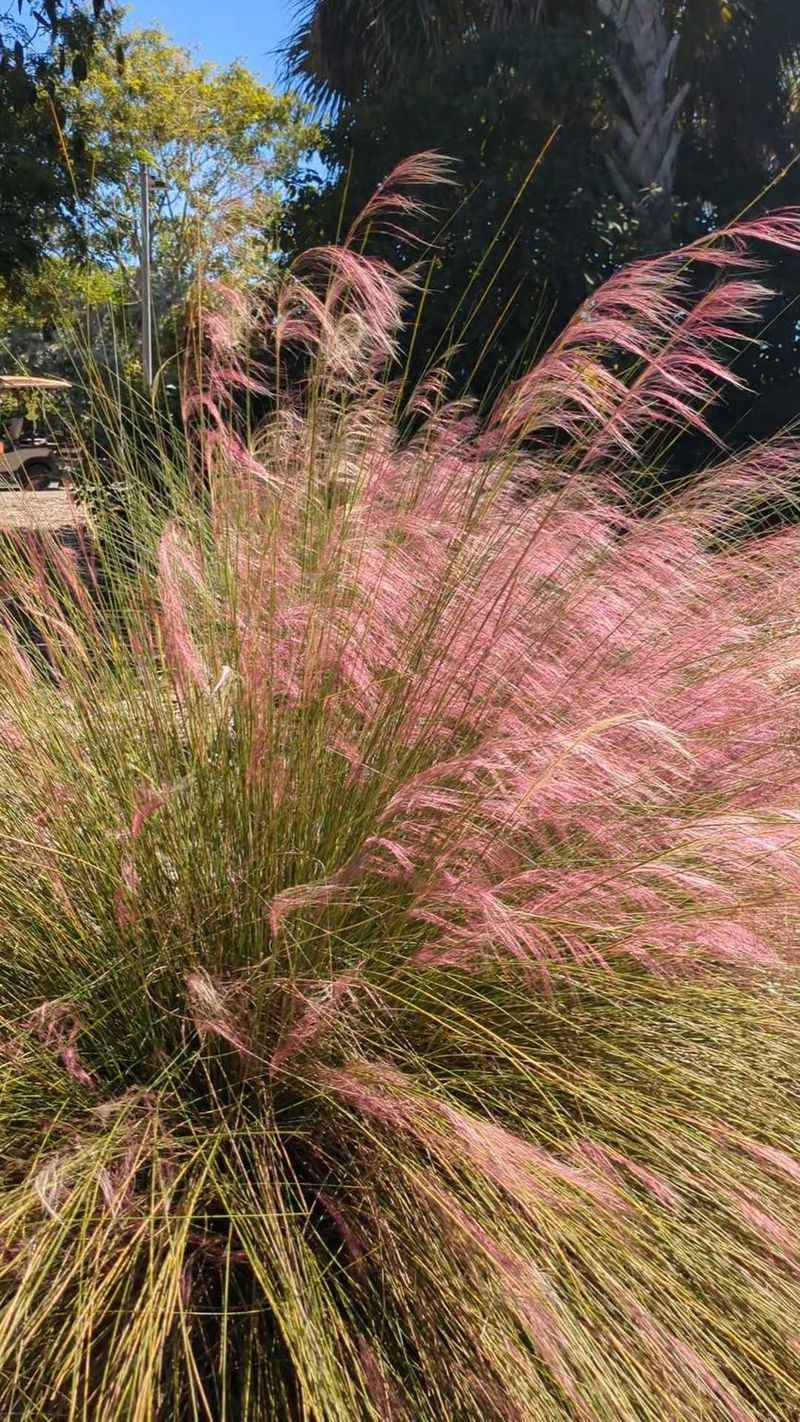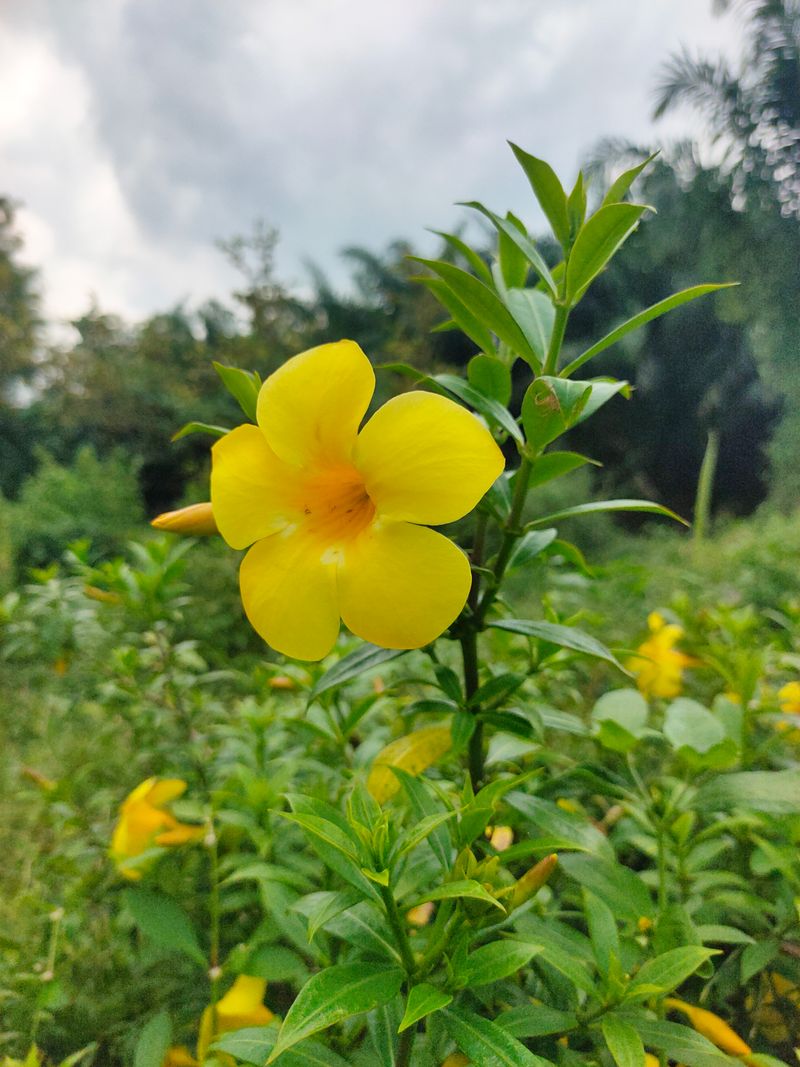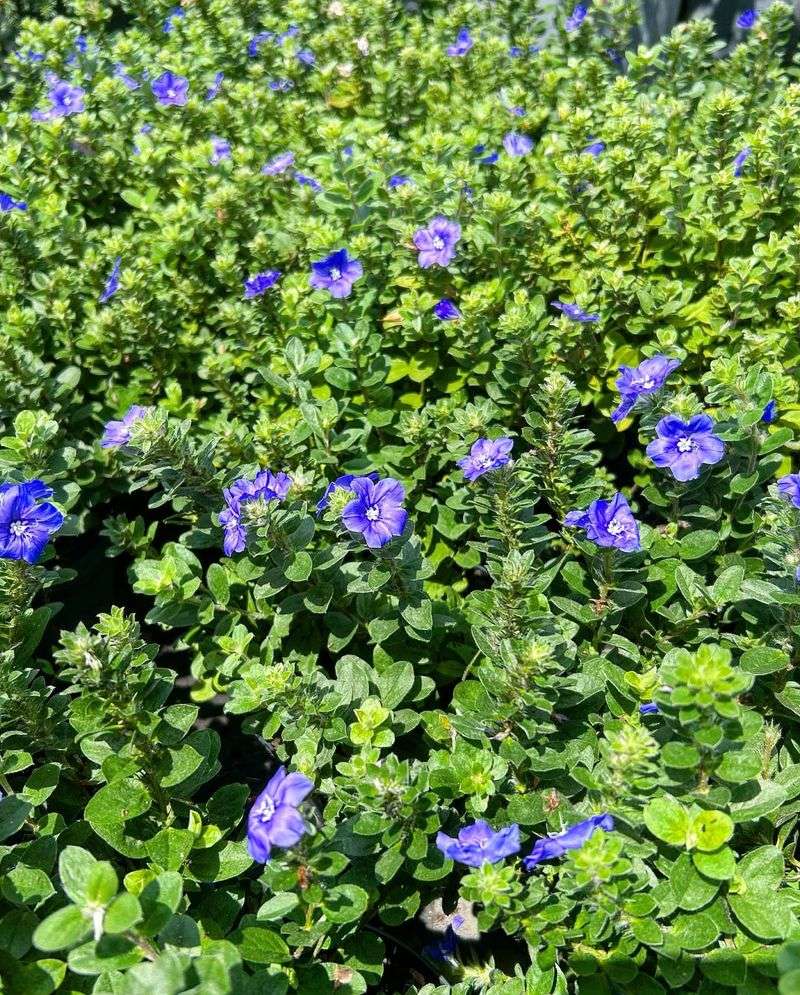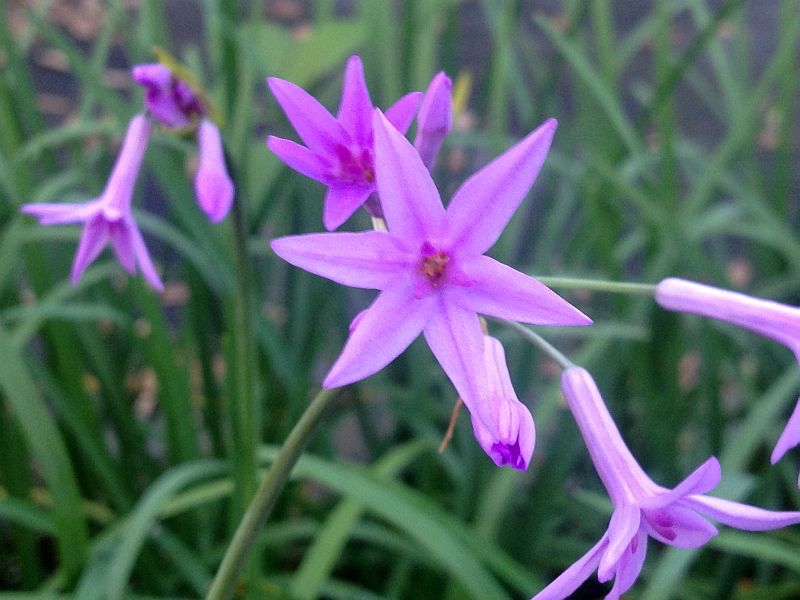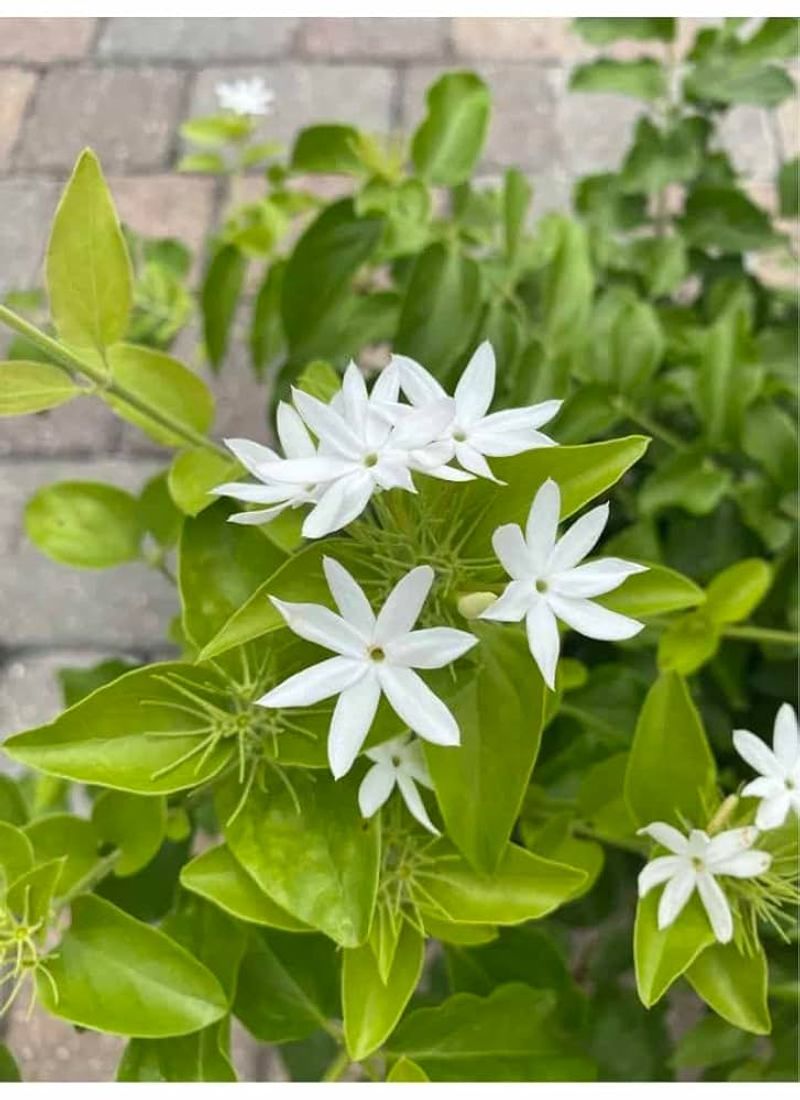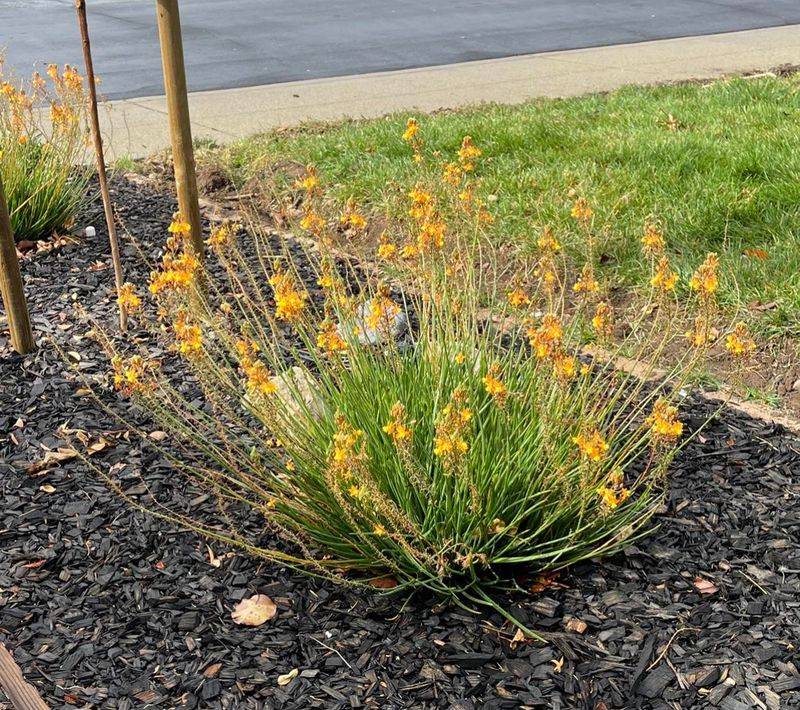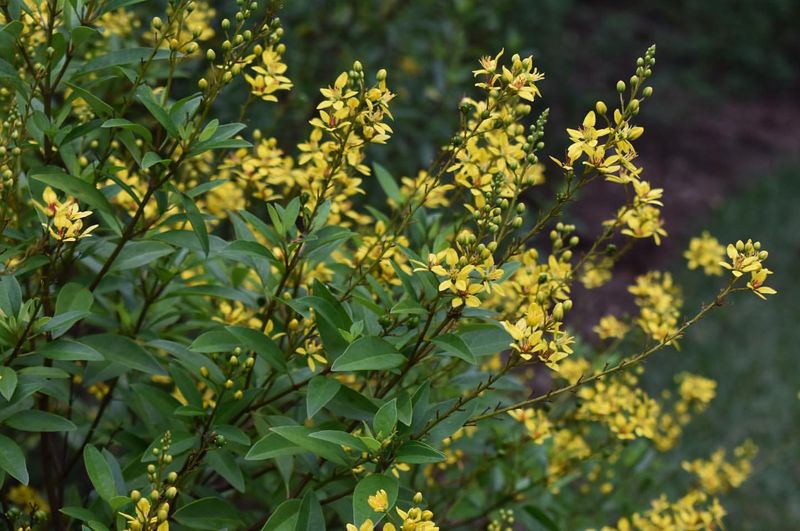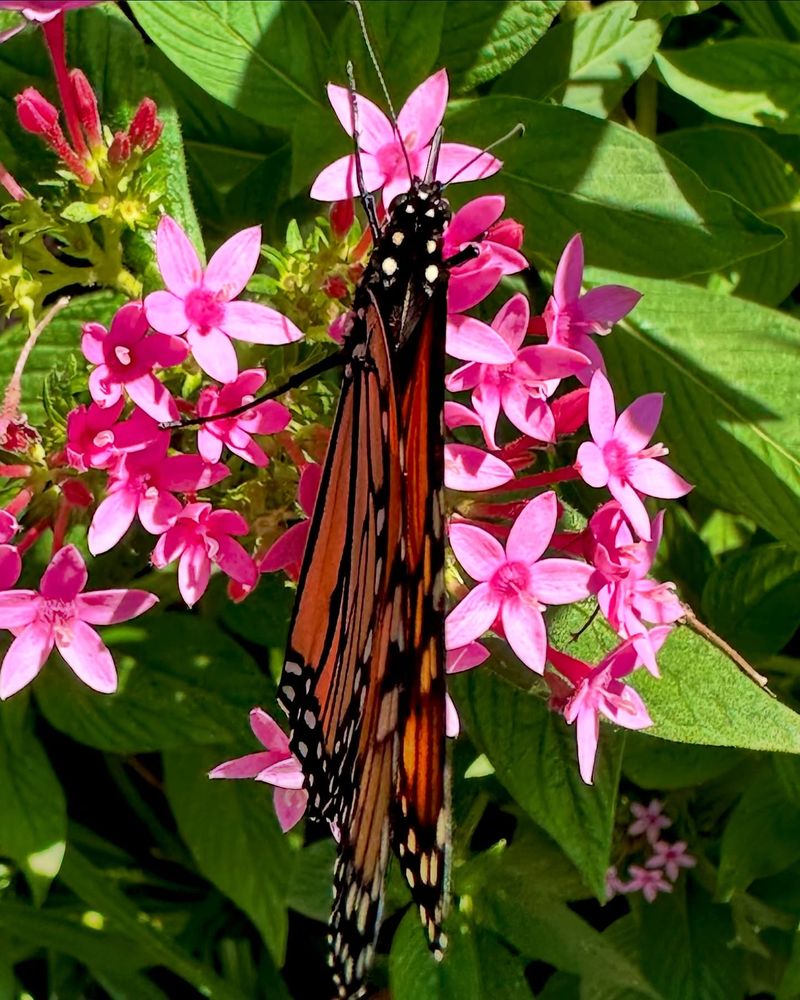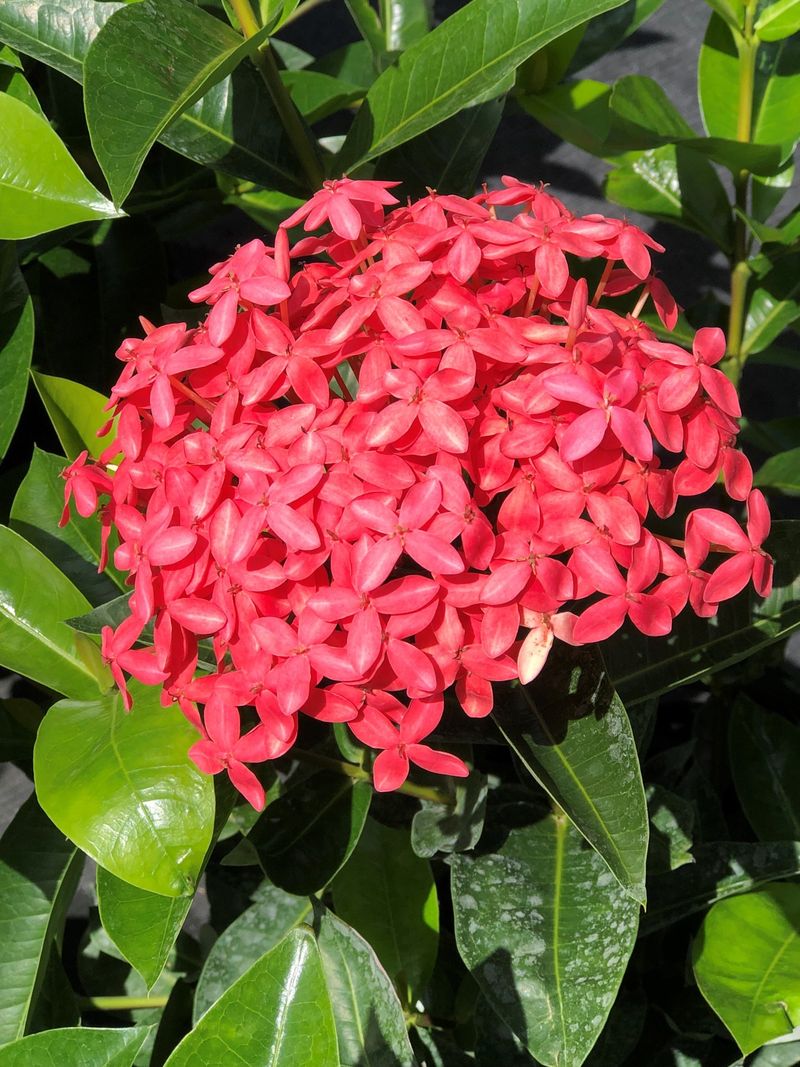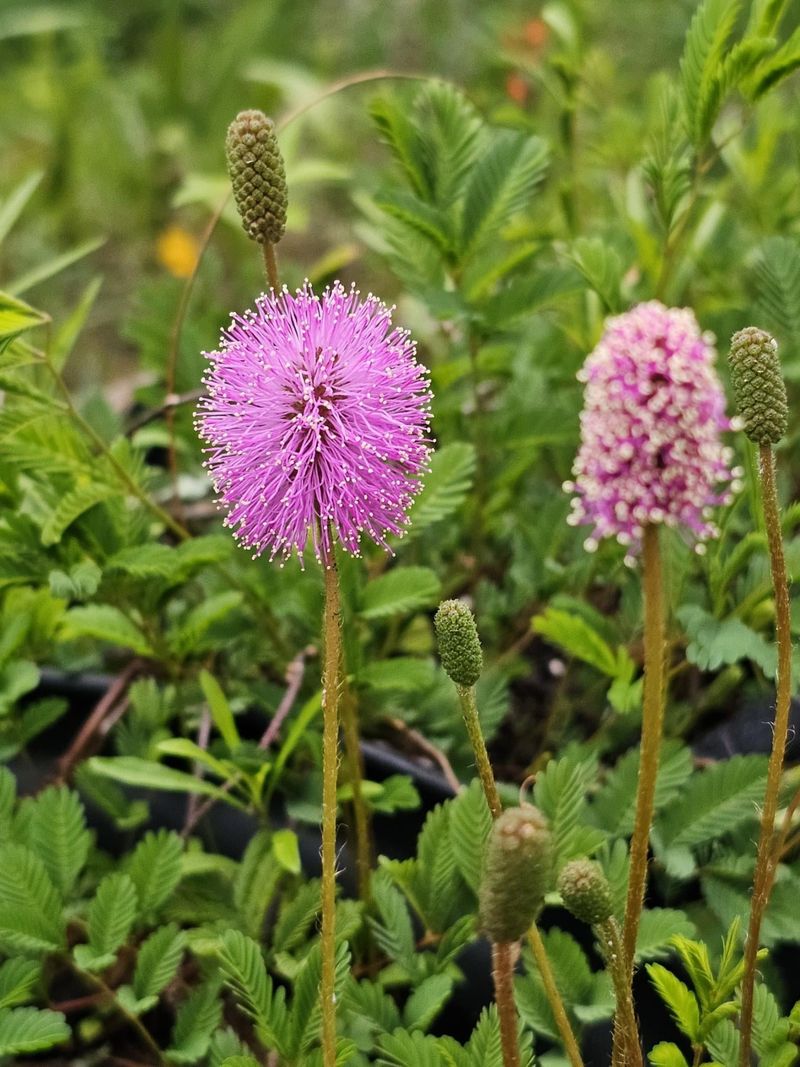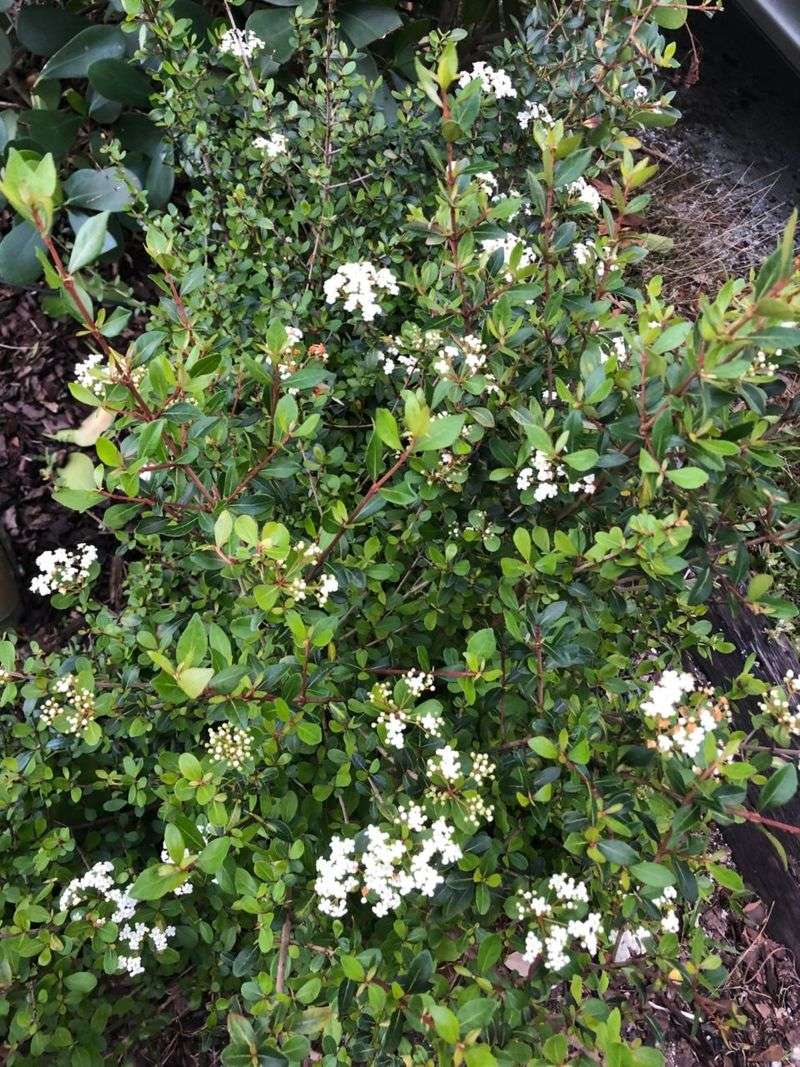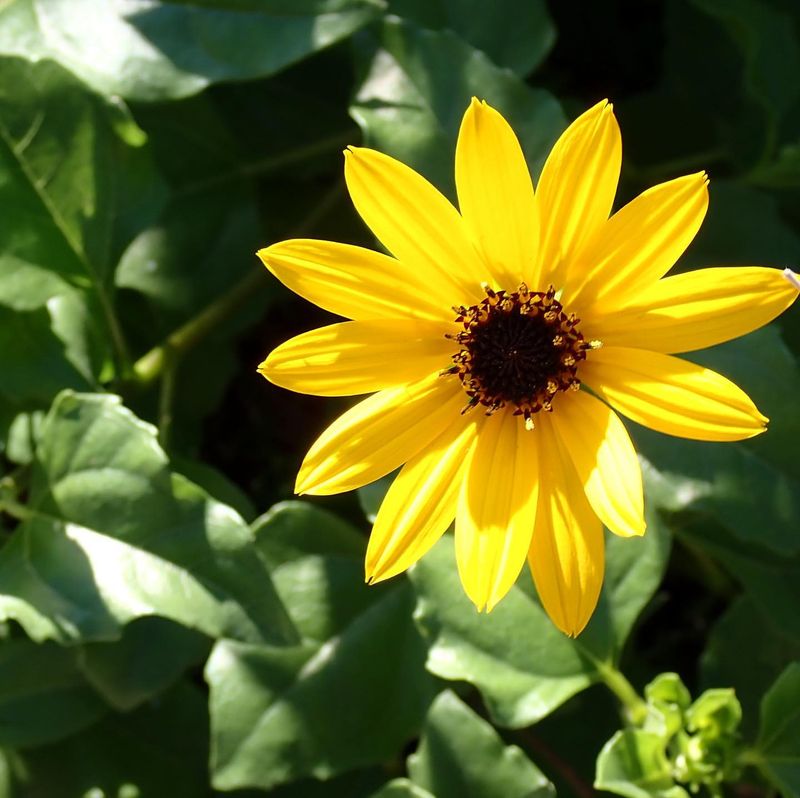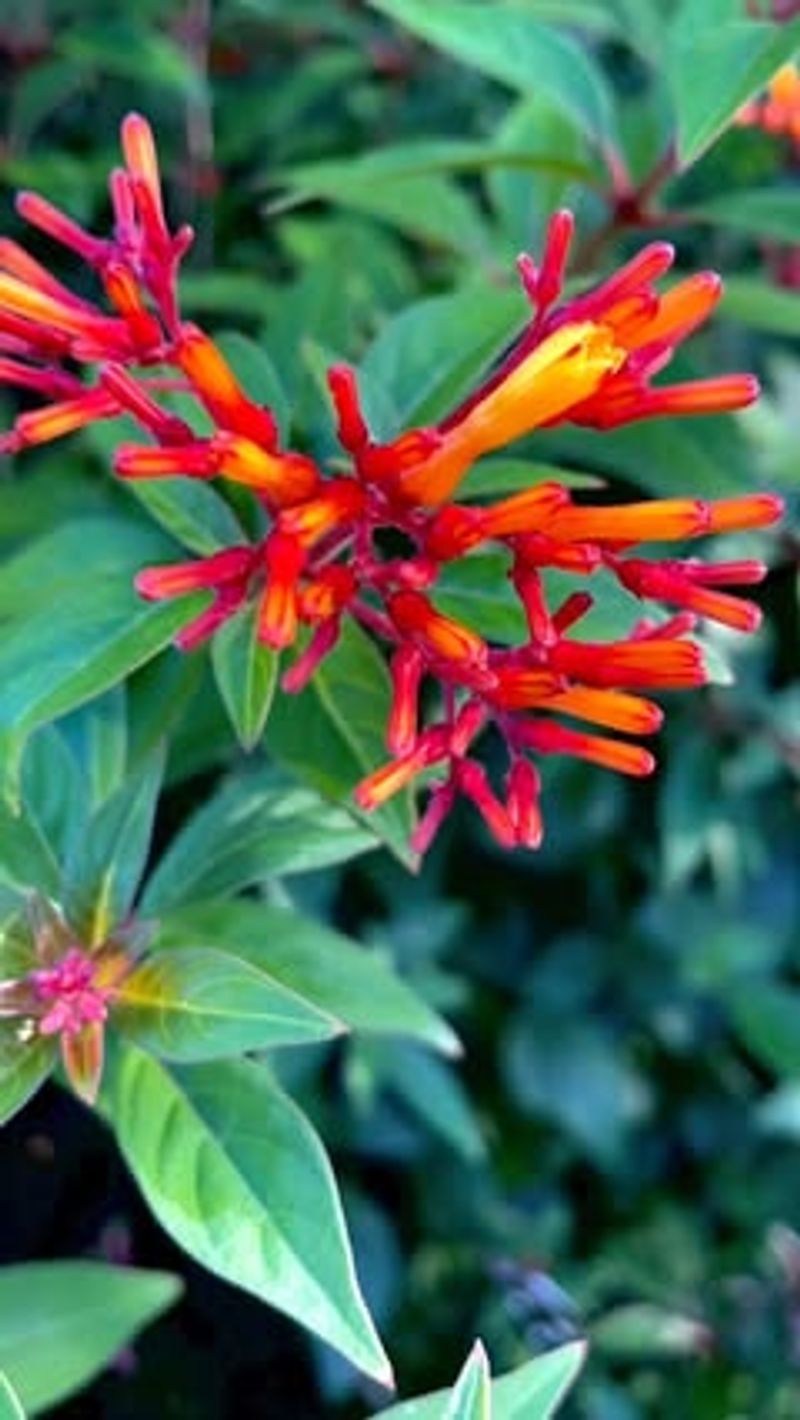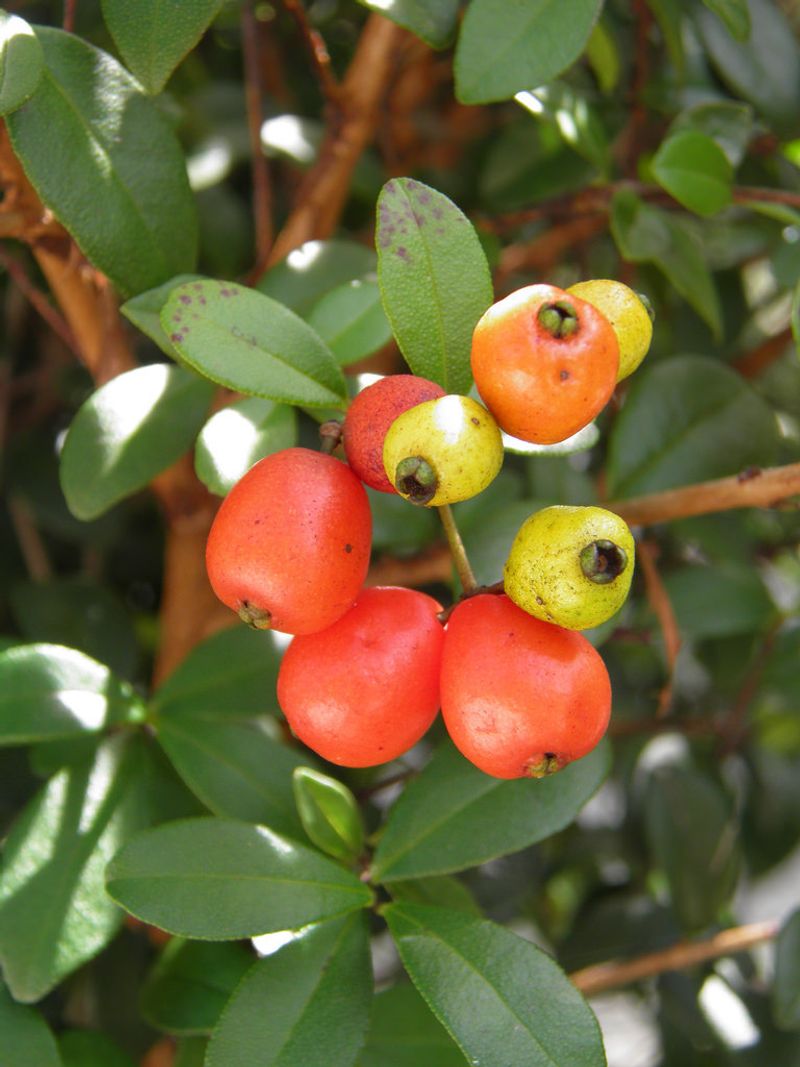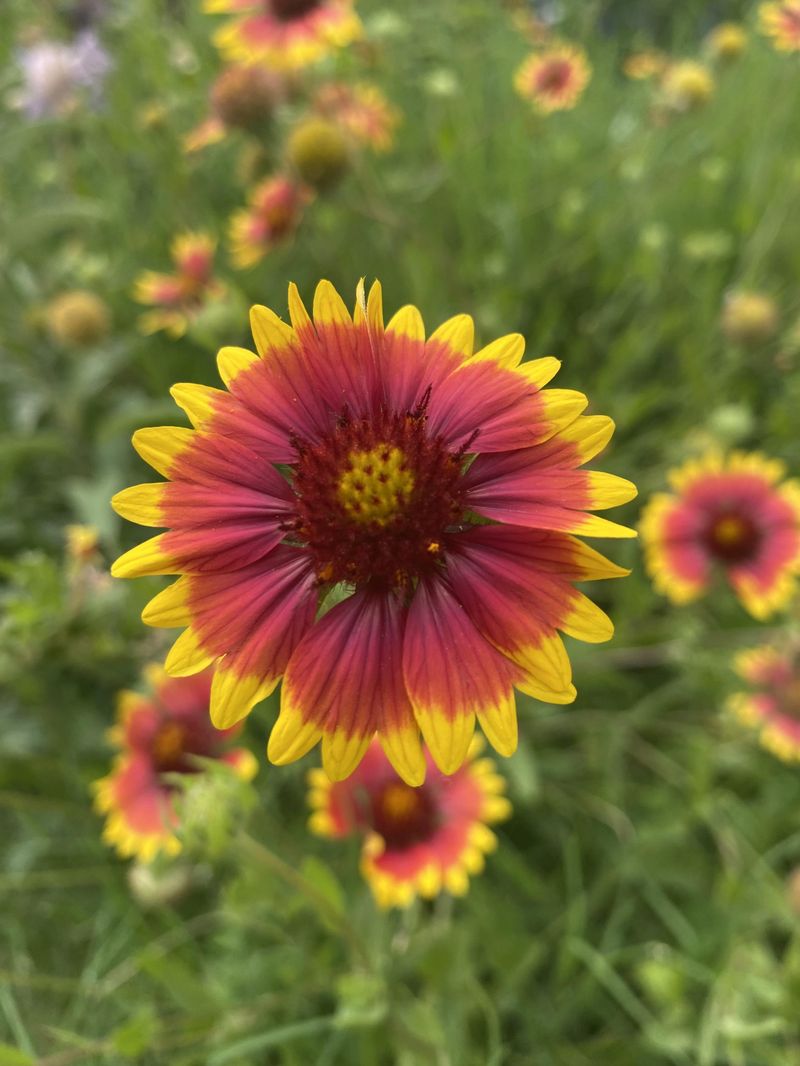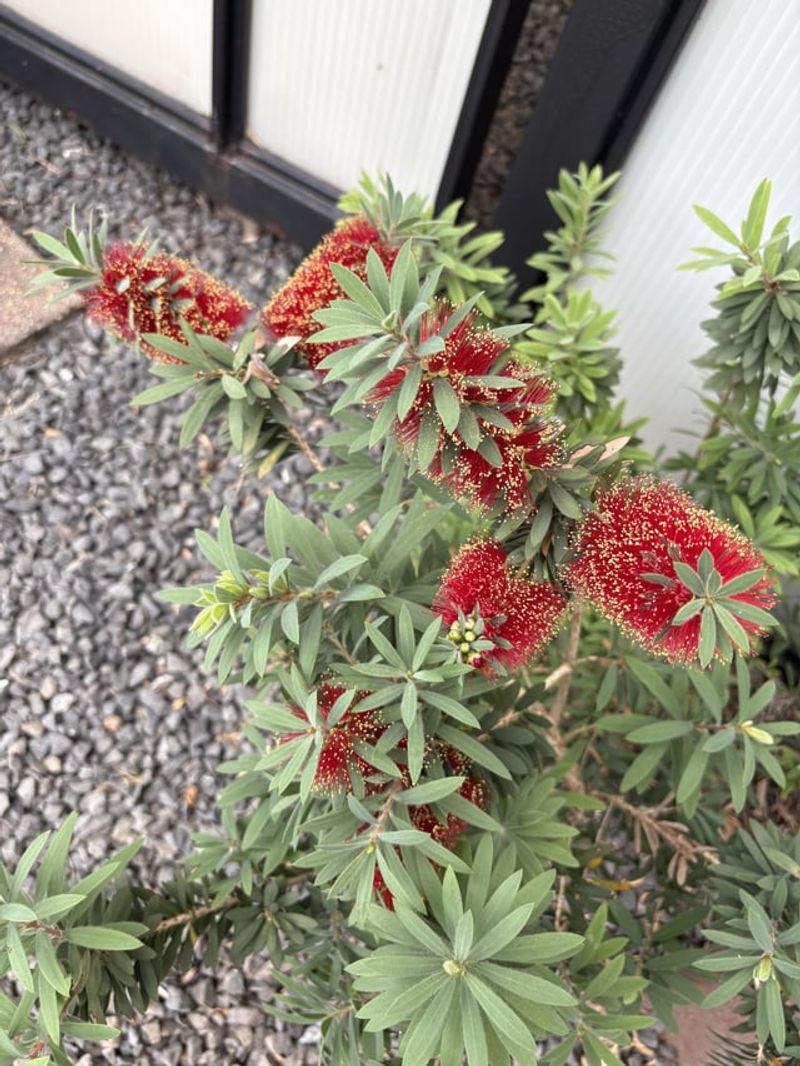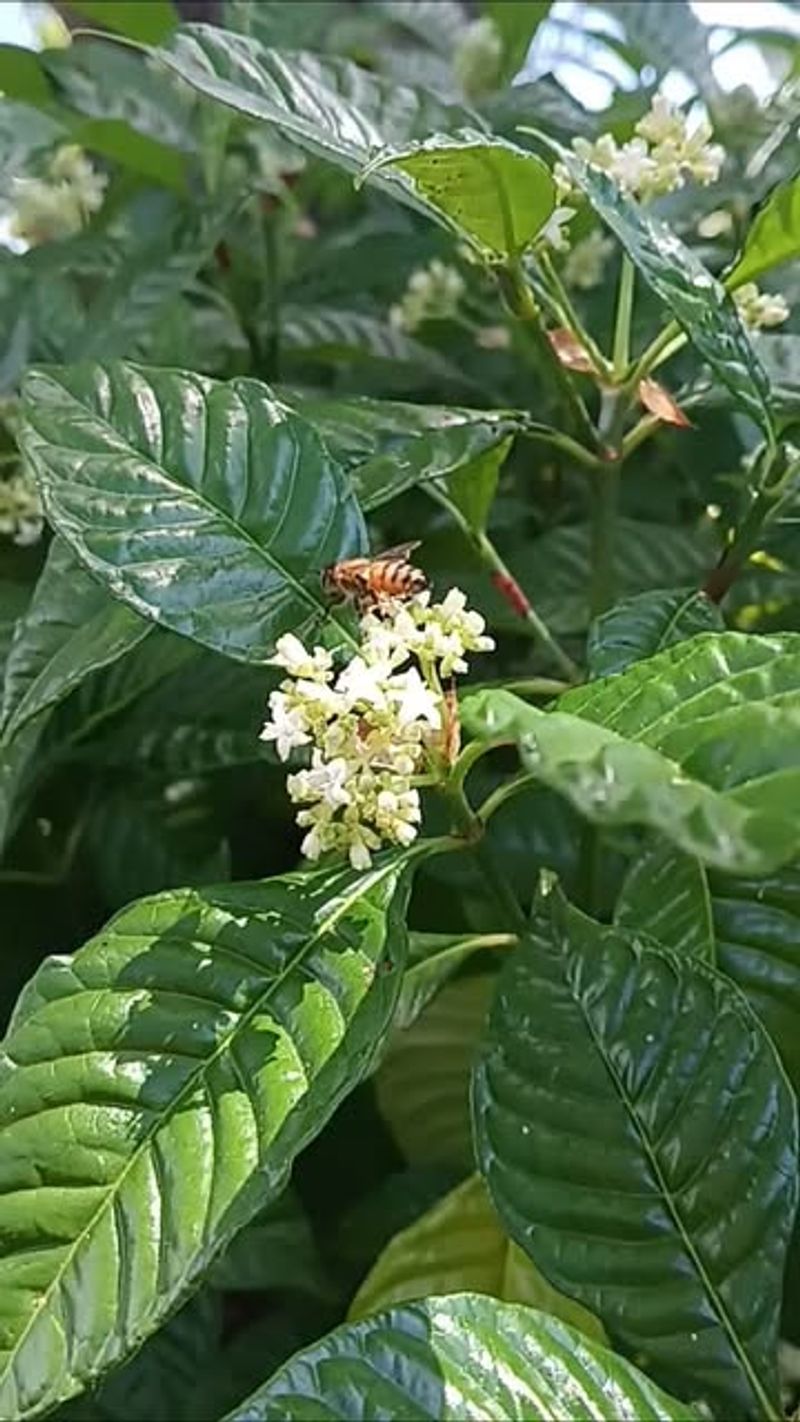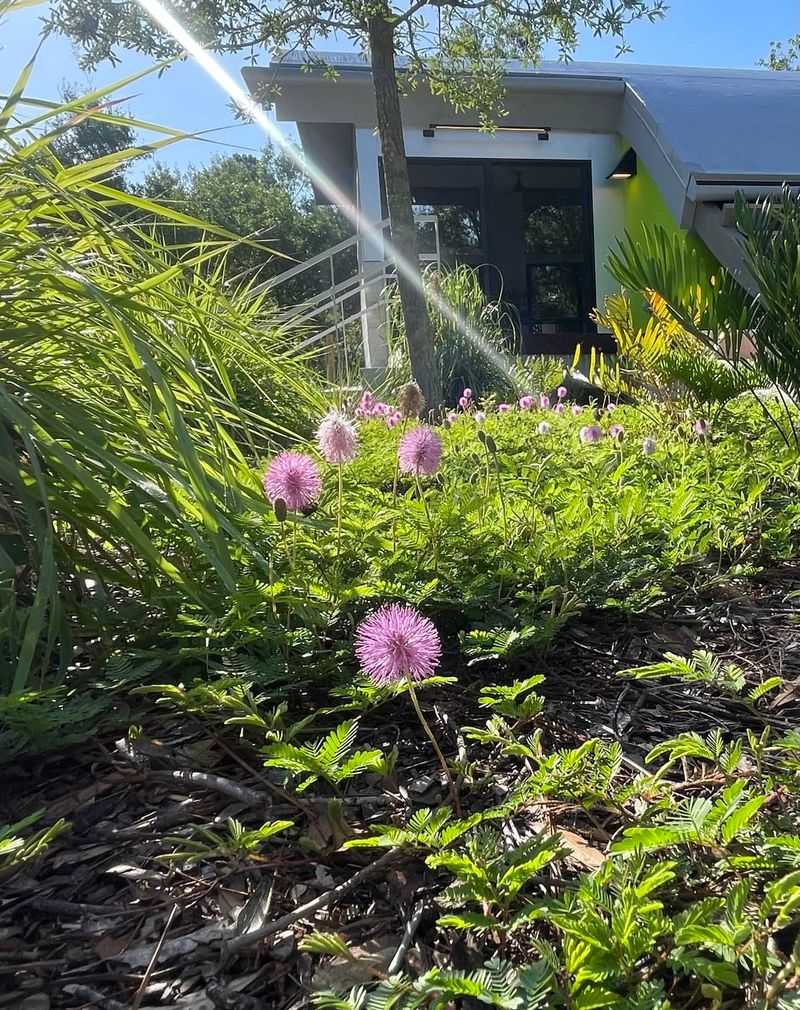Florida’s warm, humid climate can turn garden dreams into jungle battles if you’re not careful. Some plants grow so enthusiastically they take over, demanding constant maintenance and crowding out everything else. The key is finding beauty that behaves.
There’s a sweet spot—plants that thrive in the heat and humidity but don’t become garden bullies. Well-mannered choices like coontie, muhly grass, and firebush stay in bounds while adding color, texture, and structure to your yard.
With the right balance, your garden stays vibrant without feeling wild or chaotic. These 20 dependable picks bring life to your Florida landscape—minus the trimming marathons and replanting regrets.
1. Firebush
Looking for a pollinator magnet that stays in bounds? This native shrub produces clusters of tubular orange-red flowers that hummingbirds can’t resist.
During summer months, it’s absolutely covered with blooms. I’ve had one in my side yard for years without any aggressive spreading or maintenance headaches.
It handles our summer heat beautifully and can even tolerate some drought once established.
2. Coontie
Native Floridians used this plant for centuries before it became a landscape favorite. With its palm-like appearance and compact growth habit, coontie adds tropical texture without the maintenance.
My neighbor planted several as foundation plants five years ago, and they’ve maintained their tidy size perfectly. The dark green foliage stays attractive year-round.
As a bonus, it serves as the host plant for the beautiful atala butterfly.
3. Muhly Grass
Fall brings a magical transformation to this native grass. The fluffy pink or purple plumes catch morning light and seem to glow against the Florida sky.
Unlike many ornamental grasses that can become invasive, muhly grass forms a well-behaved clump that gradually increases in size. The airy seed heads dance in the slightest breeze.
Plant it where you can enjoy the backlit display during autumn months.
4. Dwarf Allamanda
Those gorgeous yellow trumpet flowers you see all over Florida don’t have to come with aggressive vines. The dwarf variety gives you those same cheerful blooms on a manageable 3-foot shrub.
Mine has brightened my front walkway for years without needing constant cutting back. The glossy green leaves provide a beautiful backdrop for the golden flowers.
Just give it full sun and watch it bloom nearly year-round in southern Florida.
5. Blue Daze
Morning walks through my neighborhood always include admiring the carpets of sky-blue flowers cascading from planters and garden edges. Blue daze opens its funnel-shaped blooms with the morning sun.
Despite its delicate appearance, this ground cover handles Florida’s heat like a champ. It spreads just enough to fill in spaces without becoming a nuisance.
The silvery-green foliage provides nice contrast even when not in bloom.
6. Society Garlic
Don’t let the name fool you—the star-shaped lavender flowers smell sweetly fragrant, nothing like garlic. The aroma only appears when you crush the leaves.
Clusters of slender, grass-like foliage form neat clumps that stay exactly where you plant them. I’ve had patches blooming reliably for years with minimal attention.
Even during our hottest months, these tough plants keep producing their pretty purple blooms on tall stems above the foliage.
7. Downy Jasmine
The sweet fragrance drifting through my garden in spring comes from this well-mannered shrub. Unlike some jasmines that can take over fences and trees, downy jasmine forms a tidy mound.
Tiny white star-shaped flowers cover the plant in spring, creating a beautiful display. The soft, slightly fuzzy leaves give it the ‘downy’ name and add nice texture to the landscape.
It performs beautifully in partial shade, perfect for those tricky spots under tall Florida trees.
8. Bulbine
Succulent-like foliage topped with spikes of yellow or orange star-shaped flowers makes this plant a standout. The flowers rise above the fleshy, pencil-like leaves on slender stems.
After trying countless plants in my difficult dry corner, bulbine finally gave me something that thrives without constant watering. It forms a gradually expanding clump that’s easy to divide if needed.
Florida’s occasional freezes may damage the leaves, but it quickly recovers when warm weather returns.
9. Thryallis
Summer can leave many Florida gardens looking tired, but not where thryallis grows. The bright yellow flower clusters appear non-stop from spring through fall, creating a cheerful presence.
Despite its tropical appearance, this shrub knows how to behave itself. My specimen has maintained a perfect 4-foot rounded shape for years without becoming leggy or spreading where it shouldn’t.
Butterflies frequently visit the blooms, adding more movement and color to the garden.
10. Pentas
Star-shaped flowers in clusters of red, pink, white or purple make pentas a favorite for butterfly gardens. The non-stop blooms appear even during the hottest Florida summers.
Unlike some flowering perennials that quickly outgrow their space, pentas maintain a reasonable size. They’ll gradually form larger clumps but never become invasive or difficult to manage.
My red variety has been a reliable performer through drought, heat waves, and even the occasional frost.
11. Dwarf Ixora
Brilliant clusters of tiny tubular flowers in orange, red, yellow, or pink create a tropical look without the maintenance headaches. The standard ixora can grow quite large, but dwarf varieties stay compact.
My neighbor’s red dwarf ixora hedge has maintained its 2-foot height for years with minimal pruning. The glossy, dark green leaves provide a beautiful backdrop for the colorful flower clusters.
Even during our occasional dry spells, it keeps its good looks with modest irrigation.
12. Powderpuff Mimosa
Fluffy pink blooms that resemble powder puffs give this shrub its common name. Unlike the invasive mimosa tree, this well-behaved relative stays compact and doesn’t produce problematic seedlings.
The delicate-looking flowers contrast beautifully with the fern-like foliage. Hummingbirds frequently visit my specimen, hovering around the unique blooms.
It performs well in Florida’s sandy soil and can handle periods of drought once established.
13. Dwarf Walter’s Viburnum
Native to Florida, this compact shrub offers white flower clusters in spring that transform into red berries birds adore. Unlike some viburnums that can reach tree-size, the dwarf variety stays manageable.
The small, glossy leaves create a dense habit that works beautifully as a low hedge. I’ve watched mine thrive through hurricanes, drought, and neglect without missing a beat.
As a Florida native, it supports local wildlife while requiring minimal supplemental water once established.
14. Beach Sunflower
Cheerful yellow daisy-like flowers dancing above silver-green foliage bring a slice of Florida beaches to home gardens. This native ground cover spreads at a reasonable pace, filling in areas without becoming aggressive.
Salt tolerance makes it perfect for coastal gardens, but it performs just as well inland. The flowers attract numerous pollinators, turning a simple planting into a buzzing ecosystem.
During severe drought, it may go dormant but quickly rebounds with rainfall.
15. Dwarf Firebush
All the wildlife benefits of regular firebush in a more compact package make this variety perfect for smaller spaces. Hummingbirds, butterflies, and native bees flock to the tubular orange-red flowers.
Unlike the standard variety that can reach 8 feet, the dwarf form stays under 3 feet tall. The reddish new growth adds another dimension of color to the landscape.
My front yard specimen handles both the intense summer heat and occasional dry spells with ease.
16. Simpson’s Stopper
White flowers that transform into bright red berries make this Florida native a year-round standout. Birds absolutely love the fruit, bringing natural pest control to your garden.
Despite its wildlife value, this shrub stays remarkably neat without aggressive spreading. The aromatic leaves supposedly stop digestive ailments—hence the unusual name.
My specimen thrives in partial shade beneath a large oak tree, requiring almost no supplemental water after establishment.
17. Blanket Flower
Daisy-like blooms in fiery sunset colors of red, orange, and yellow brighten Florida gardens nearly year-round. The cheerful flowers seem to float above the foliage on slender stems.
Despite its delicate appearance, blanket flower handles Florida’s heat, humidity, and sandy soil with remarkable resilience. It forms a gradually expanding clump that’s easy to control.
After trying countless perennials, this one finally gave me reliable color without constant maintenance or unwanted spreading.
18. Dwarf Bottlebrush
Crimson brush-like flowers that resemble—you guessed it—bottle brushes, make this shrub a standout. The standard bottlebrush can become a substantial tree, but dwarf varieties stay manageable.
Hummingbirds absolutely cannot resist the unusual flowers. My ‘Little John’ variety has maintained its compact 3-foot size for years without becoming leggy or overgrown.
The blue-green foliage provides nice contrast even when the plant isn’t flowering.
19. Wild Coffee
Glossy, rippled leaves that look like they’ve been artfully crimped give this Florida native distinctive character. Small white flowers develop into red berries that resemble coffee beans (though they’re not edible for humans).
Birds love the berries, making this an excellent choice for wildlife gardens. Despite its tropical appearance, wild coffee stays remarkably compact and well-behaved.
My specimen thrives in the dappled shade beneath oak trees, requiring minimal care once established.
20. Sunshine Mimosa
Pink powderpuff flowers rising from a carpet of fern-like foliage create a magical effect in Florida landscapes. This native ground cover slowly spreads to fill in spaces without becoming problematic.
The leaves fold up when touched, earning it the nickname “sensitive plant” and delighting children and adults alike. As a Florida native, it supports local pollinators while requiring minimal care.
My patch thrives in both full sun and partial shade, with no supplemental irrigation needed after establishment.

